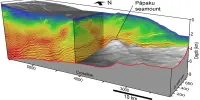Nature is essential to our survival: it provides oxygen, regulates weather patterns, pollinates crops, and produces food, feed, and fiber. However, it is under increasing strain. Human activity has changed nearly 75% of the earth’s surface, squeezing wildlife and nature into a smaller and smaller corner of the planet.
The world’s governments are currently negotiating a Global Biodiversity Framework, which will include goals and targets for preserving nature and is expected to be adopted by the end of 2022. Conservation experts investigated how the Framework’s proposed targets could help to reduce the extinction risk of threatened vertebrates, invertebrates, and plants. Their findings show that while targets to expand protected areas or reduce pollution will benefit many species, 57% would still need targeted recovery actions.
A staggering 57% of threatened species need targeted recovery actions to ensure their survival, new research has shown.
Without targeted recovery actions, 57 percent of the world’s threatened species will remain so. Many will benefit from policies and actions aimed at reducing threats such as land- and sea-use change, overexploitation, pollution, invasive species, and climate change, but these will not eliminate the risk of extinction faced by these species.
Professor Philip McGowan
The world’s governments are currently negotiating a Global Biodiversity Framework, which will include goals and targets for preserving nature and is expected to be adopted by the end of 2022. Conservation experts investigated how the Framework’s proposed targets could help to reduce the extinction risk of threatened vertebrates, invertebrates, and plants. Their findings show that, while expanding protected areas and reducing pollution will benefit many species, 57 percent will require targeted recovery actions. Captive breeding in zoos, reintroduction into the wild, moving individuals between locations, disease vaccination, and other species-specific interventions are examples of these actions.
Led by Newcastle University, the study was published in the journal Frontiers in Ecology and the Environment. The project brought together leading ecology and conservation experts, including scientists from the International Union for Conservation of Nature (IUCN), BirdLife International and a global network of universities.
Professor Philip McGowan, Professor of Conservation Science and Policy at Newcastle University’s School of Natural and Environmental Sciences and the study’s corresponding author, stated: “Without targeted recovery actions, 57 percent of the world’s threatened species will remain so. Many will benefit from policies and actions aimed at reducing threats such as land- and sea-use change, overexploitation, pollution, invasive species, and climate change, but these will not eliminate the risk of extinction faced by these species. We can now identify the species that require such action, as well as monitor what is being done and the impact of that action on those threatened species.”

According to the 2019 Global Assessment Report on Biodiversity and Ecosystem Service, approximately 1 million animal and plant species are on the verge of extinction, with many facing extinction within the next few decades. The report advocated for radical changes to restore and protect nature. It discovered that the health of the ecosystems on which we and all other species rely is deteriorating faster than ever before, threatening the very foundations of our economies, livelihoods, food security, health, and quality of life around the world.
Human-caused deforestation and desertification pose major challenges to sustainable development and have impacted the lives and livelihoods of millions of people. Forests are critical to the survival of life on Earth and play an important role in the fight against climate change. And investing in land restoration is critical for improving livelihoods, reducing vulnerabilities, and reducing risks for the economy.
Tackling the risk of extinction
The research was based on 7,784 species listed as ‘Vulnerable’, ‘Endangered’, and ‘Critically Endangered’ in the IUCN Red List of Threatened Species. The team considered the targets in the first draft of the UN Convention on Biological Diversity’s Global Biodiversity Framework.
The scientists assessed the potential benefits to each threatened species of implementing each target. They found that Target 1 (on implementing spatial planning to retain existing intact ecosystems), Target 2 (on restoring degraded ecosystems and ensure connectivity among them), and Target 3 (on protecting important areas for biodiversity) will be particularly important, as 95% of threatened species would benefit from their implementation.
However, the data show that these actions, as well as those for targets 5-8 on reducing pressures from unsustainable use, invasive species, pollution, and climate change, would still put at least 57% of threatened species (4,428 species) at risk of extinction. To prevent genetic swamping, the Black Stilt, a threatened waterbird from New Zealand, requires captive-rearing, release, and control of hybrids with Black-winged Stilts, in addition to predator control and habitat management.
Dr. Stuart Butchart, Chief Scientist at BirdLife International and study co-author, stated: “This study demonstrates that simply protecting specific areas and addressing key threats will not prevent species from becoming extinct: some species will require dedicated efforts to help them recover. It is therefore critical that governments adopt specific and measurable goals for species conservation, as well as a clear commitment to implement the actions required to achieve these goals.”
















